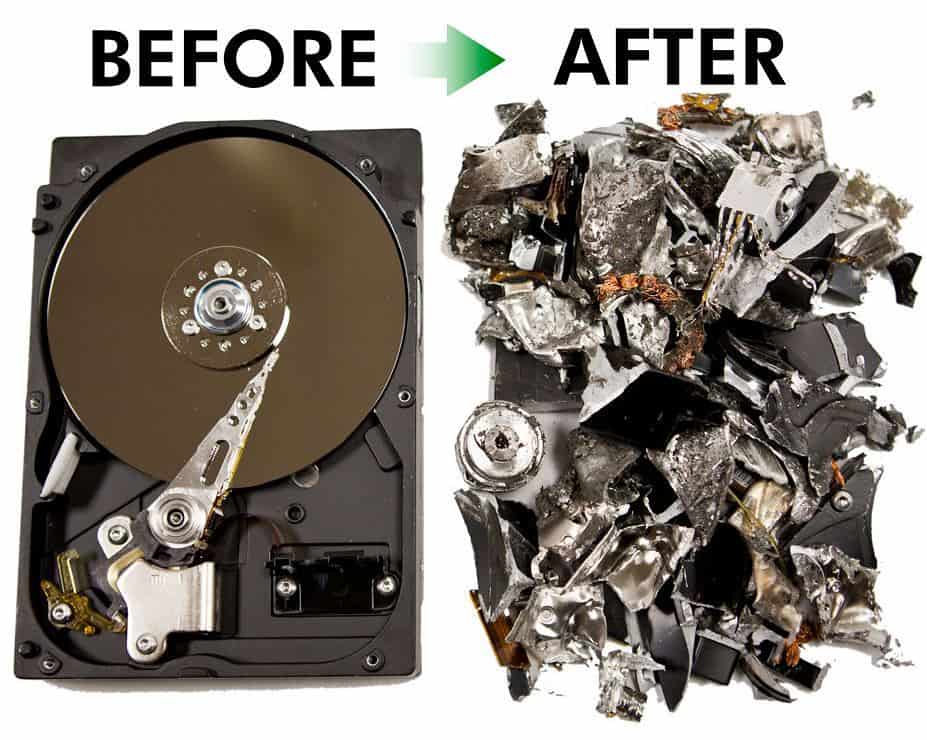The Impact of Effective Data Destruction on Cyber Security Threat Administration
The Impact of Effective Data Destruction on Cyber Security Threat Administration
Blog Article
Exactly How Appropriate Data Destruction Adds to Robust Computer Safety Solutions and Mitigates Dangers of Data Violations
In today's electronic landscape, the significance of appropriate information devastation can not be overemphasized, as it functions as a fundamental part of detailed computer system security solutions. By executing effective information erasure strategies, companies not just safeguard delicate info from unauthorized gain access to yet likewise bolster their conformity with governing structures - data destruction. The ramifications of insufficient information devastation expand beyond mere compliance; they can exceptionally influence an organization's cybersecurity posture and credibility. Recognizing these dimensions raises vital questions regarding the techniques in place and their effectiveness in an era of escalating cyber risks.
Relevance of Data Damage
In today's digital landscape, the value of data destruction can not be overemphasized. As companies significantly rely upon electronic assets, the possible dangers connected with information violations and unapproved gain access to magnify. Reliable data destruction is an essential element of a detailed details safety and security strategy, securing delicate details from dropping into the hands of harmful actors.
When information is no much longer needed, just erasing files or formatting disk drives is insufficient. Residual information can frequently be recuperated utilizing conveniently offered devices, posing considerable risks to both organizations and individuals. This emphasizes the necessity for robust data damage techniques that make certain all information is irretrievably erased.
Moreover, governing compliance mandates, such as GDPR and HIPAA, emphasize the responsibility to shield delicate information, including its appropriate disposal. Non-compliance can cause serious monetary penalties and lawful repercussions. data destruction. Thus, incorporating reliable information damage procedures not just improves safety yet additionally strengthens an organization's reputation and dependability

Techniques of Secure Data Erasure
A number of reliable techniques of safe information erasure can be employed to guarantee that sensitive details is permanently gotten rid of from storage devices. One extensively recognized technique is information overwriting, which includes changing existing data with arbitrary patterns numerous times. This method considerably minimizes the chances of data recuperation, although it may not work versus sophisticated forensic strategies.

Physical devastation is also a reliable technique, where storage space tools are rendered unusable through shredding, crushing, or incineration. This method makes sure that data can not be recuperated whatsoever however calls for careful handling of dangerous materials.
Lastly, specialized software tools developed for protected data erasure give functionalities that conform with different erasure standards. These tools frequently include functions like confirmation processes to verify successful data devastation.
Utilizing these techniques in mix can boost information protection and alleviate the threats connected with information violations, making certain that delicate info is not accidentally subjected.
Legal and Conformity Considerations
The methods used for secure data erasure not just offer to secure delicate information however additionally must straighten with legal and compliance structures controling information security. Organizations are required to comply with various laws, such as the General Information Protection Policy (GDPR), the Health And Wellness Insurance Mobility and Liability Act (HIPAA), and the Payment Card Industry Information Protection Standard (PCI DSS) These regulations mandate particular procedures for information handling and destruction, guaranteeing that individual and sensitive data is irretrievably eliminated when no more required.
Failing to abide by these lawful needs can result in significant charges, including fines and reputational damage. Furthermore, companies need to keep records of information damage procedures, demonstrating conformity throughout audits or examinations. This documentation not only secures versus lawful repercussions but also reinforces trust with stakeholders and clients, showcasing a commitment to data safety.
Including lawful and compliance considerations right into information damage methods is crucial for any kind of organization. It reduces the threat of information violations and shows a proactive strategy to protecting delicate information, inevitably promoting a culture of protection and liability throughout the organization.
Influence on Cybersecurity Pose
Effective data devastation substantially enhances a company's cybersecurity posture by decreasing the potential attack surface area for cyber dangers. When delicate data is not correctly damaged, it stays available to harmful stars who can exploit this information for unapproved access, identification theft, or business espionage. By applying robust data destruction procedures, organizations can properly decrease the risk of information violations and enhance their total safety and security structure.
Furthermore, the safe disposal of out-of-date or unneeded data not just protects delicate information however additionally aids organizations abide by market regulations and criteria. Failing to appropriately destroy data can cause severe legal effects and reputational damages, further compromising an organization's cybersecurity position.

Ultimately, focusing on efficient information devastation is vital for promoting a durable cybersecurity posture, ensuring that organizations stay vigilant versus evolving cyber risks while shielding their essential assets and stakeholders.
Best Practices for Organizations
Implementing finest practices for information destruction is essential for companies aiming to safeguard delicate information and mitigate cybersecurity threats. Most importantly, organizations must establish a detailed data devastation policy that lays out obligations and procedures. This policy needs to follow pertinent regulations, such as GDPR or HIPAA, guaranteeing lawful consistency.
Secondly, it is vital to use authorized information sanitization methods, consisting of information cleaning, degaussing, and physical destruction, tailored to the sort of information and storage space medium. Utilizing certified professionals for data devastation solutions improves the integrity of these methods.
Additionally, organizations should maintain a thorough inventory of all data storage tools, making sure that all outdated or changed devices undertakes destruction. Regular audits of data devastation techniques can aid improve and identify weaknesses compliance.
Worker training is one more important element, as personnel should comprehend the relevance of information damage and comply with established protocols. Organizations must document all data destruction activities to give liability and traceability, which can be important during audits or in the occasion of a breach.
Conclusion

One commonly recognized method is information overwriting, which involves replacing existing data with arbitrary patterns webpage numerous times.The techniques used for safe information erasure not only offer to shield delicate details however likewise must straighten with legal and conformity structures regulating data protection. These laws mandate details methods for data managing and damage, making pop over to these guys sure that delicate and individual data is irretrievably erased when no longer required.
By carrying out durable information damage protocols, companies can efficiently lessen the threat of information violations and boost their overall safety and security structure.
In verdict, appropriate data damage is necessary for improving computer system safety services and alleviating the risks linked with data violations. - data destruction
Report this page